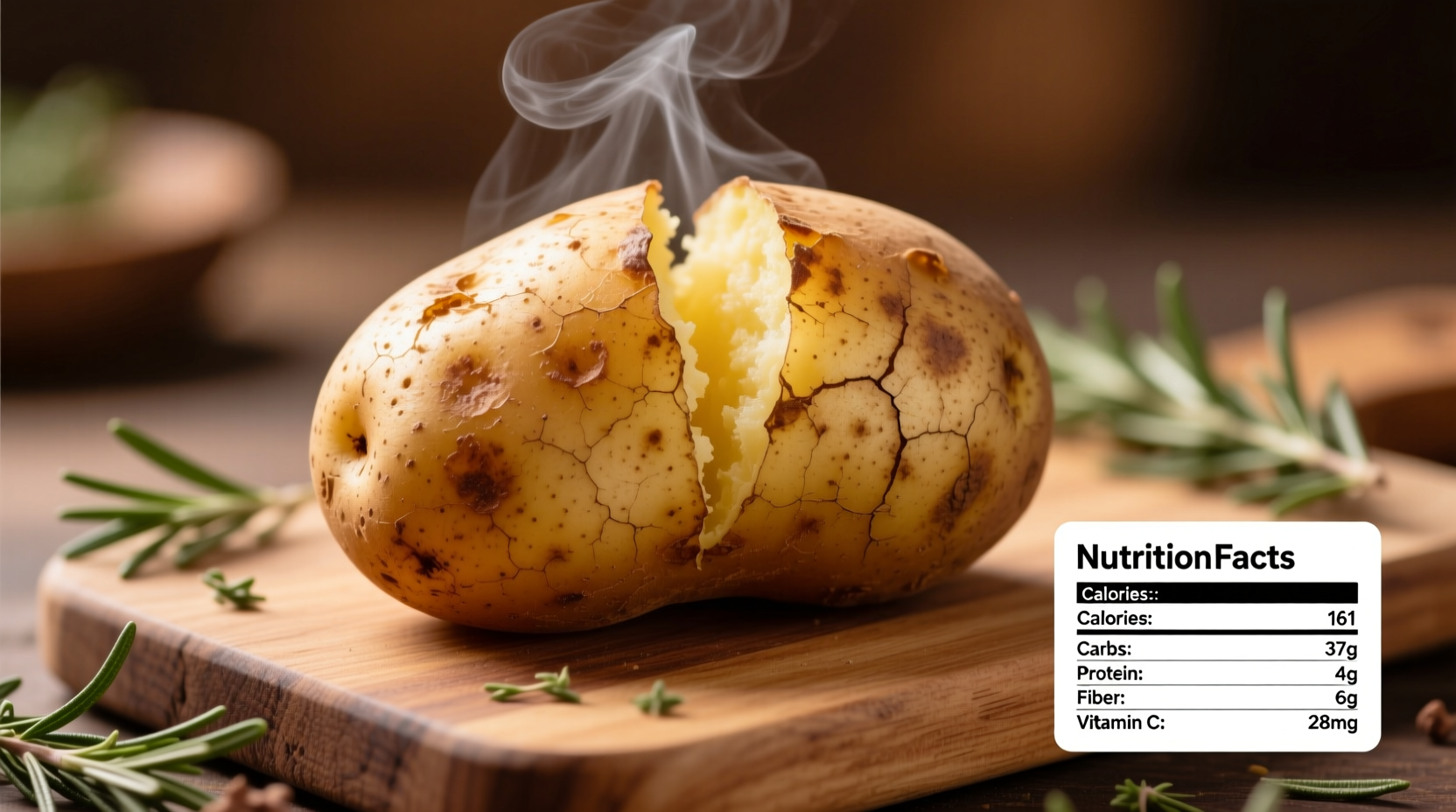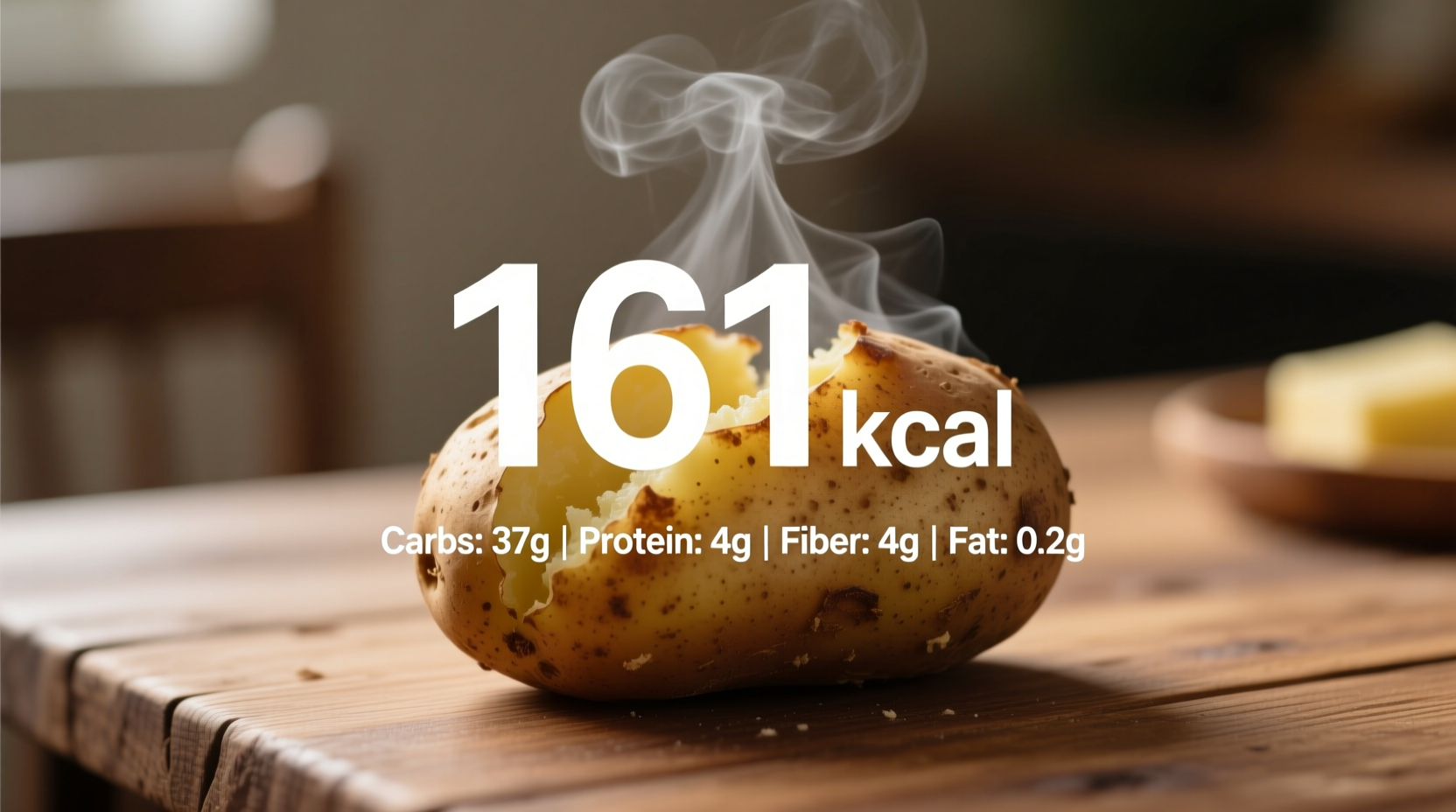Understanding exactly how many calories in a baked potato matters whether you're tracking your daily intake, managing weight, or simply making informed food choices. This comprehensive guide delivers precise nutritional information backed by authoritative sources, helping you incorporate this versatile vegetable into your diet with confidence.
What Determines Baked Potato Calorie Count?
The calorie content in a baked potato isn't fixed—it varies based on several key factors that many nutrition articles overlook. Let's examine what actually affects the final count:
Potato Size Variations
Size is the most significant factor affecting calorie content. The USDA standardizes measurements by weight rather than diameter, which provides more accurate nutritional data. Here's how calories scale with size:
| Potato Size | Weight (grams) | Calories | Carbohydrates |
|---|---|---|---|
| Small | 138g | 129 | 29g |
| Medium | 173g | 161 | 37g |
| Large | 299g | 278 | 63g |
| Jumbo | 369g | 343 | 78g |
Data source: USDA FoodData Central, entry #11018
Preparation Method Impact
How you prepare your baked potato significantly affects its nutritional profile:
- With skin: Retains maximum nutrients and fiber (about 4g per medium potato)
- Without skin: Loses approximately 25% of fiber content
- Cooking temperature: Higher temperatures (400°F+) create slightly more resistant starch
- Cooling after baking: Increases resistant starch content by up to 33%
Nutritional Profile Beyond Calories
While tracking calories in a baked potato is important, its complete nutritional value makes it a valuable addition to most diets. A medium baked potato provides:
- 37g carbohydrates (12% of daily value)
- 4.3g dietary fiber (17% of daily value)
- 4.3g protein (8% of daily value)
- 926mg potassium (26% of daily value)
- 27mg vitamin C (30% of daily value)
- Significant vitamin B6, magnesium, and iron
Unlike refined carbohydrates, potatoes provide complex carbs with a moderate glycemic index (around 60-70 depending on preparation), making them suitable for most balanced diets when portion-controlled.

How Toppings Transform Calorie Content
What many people don't realize is that toppings often contribute more calories than the potato itself. Here's how common additions change the nutritional equation:
- 2 tablespoons sour cream: +52 calories (total: 213)
- 1 tablespoon butter: +102 calories (total: 263)
- 1/4 cup shredded cheddar: +114 calories (total: 275)
- 2 tablespoons bacon bits: +44 calories (total: 205)
- 1/2 avocado, mashed: +120 calories (total: 281)
For those tracking calories in a baked potato for weight management, consider these lighter alternatives:
- Plain Greek yogurt instead of sour cream (-25 calories)
- Herb-infused olive oil spray instead of butter (-90 calories)
- Fresh salsa instead of cheese (+15 calories vs +114)
- Steamed broccoli instead of bacon (+30 calories vs +44)
Contextualizing Baked Potato Nutrition
Understanding how many calories in a baked potato requires comparing it to other common carbohydrate sources:
- White rice (1 cup cooked): 204 calories
- Pasta (1 cup cooked): 221 calories
- Bread (1 slice): 79 calories
- Sweet potato (medium): 103 calories
Unlike processed carbohydrates, baked potatoes offer naturally occurring fiber, vitamins, and minerals without added sugars or preservatives. The resistant starch content increases when cooled, providing prebiotic benefits for gut health.
Practical Applications for Different Dietary Goals
Whether you're following a specific eating plan or simply trying to make healthier choices, understanding baked potato nutrition helps you make informed decisions:
For Weight Management
A medium baked potato contains fewer calories than many assume, making it a satisfying, nutrient-dense option. The high fiber content promotes fullness, potentially reducing overall calorie intake at meals. For optimal weight management results, keep toppings minimal and focus on protein-rich additions like Greek yogurt or a small portion of lean protein.
For Athletic Performance
Endurance athletes often include baked potatoes in their meal planning due to their ideal carbohydrate-to-calorie ratio. The complex carbohydrates provide sustained energy release, while the potassium content helps prevent muscle cramps. Many athletes time their potato consumption around workouts for optimal performance and recovery.
Dietary Considerations
While generally well-tolerated, some individuals need to monitor potato consumption:
- Diabetics: Pair with protein and healthy fats to moderate blood sugar response
- Low-carb diets: Limit to small portions or substitute with lower-carb vegetables
- Digestive sensitivities: Cooling potatoes increases resistant starch, which may cause bloating in some individuals
Common Questions About Baked Potato Nutrition
Does the skin of a baked potato contain significant calories?
The skin itself contains minimal calories but provides about 2 grams of the potato's total 4.3 grams of fiber. Leaving the skin on increases nutritional value without significantly affecting the calorie count in a baked potato.
How does cooling a baked potato affect its calorie content?
Cooling a baked potato after cooking increases its resistant starch content by up to 33%, which slightly reduces the net digestible calories. While the total calorie count remains technically the same, the body absorbs fewer calories from the increased resistant starch.
Are baked potatoes high in carbohydrates compared to other starches?
A medium baked potato contains 37g of carbohydrates, which is comparable to 1 cup of cooked white rice (45g) but higher than 1 slice of bread (13g). However, potatoes provide more fiber, vitamins, and minerals per calorie than many refined carbohydrate sources.
Can baked potatoes fit into a low-calorie diet?
Yes, a medium baked potato contains only 161 calories and can be an excellent component of a low-calorie diet when prepared without high-calorie toppings. Its high fiber and water content promote satiety, helping you feel full with fewer calories.











 浙公网安备
33010002000092号
浙公网安备
33010002000092号 浙B2-20120091-4
浙B2-20120091-4